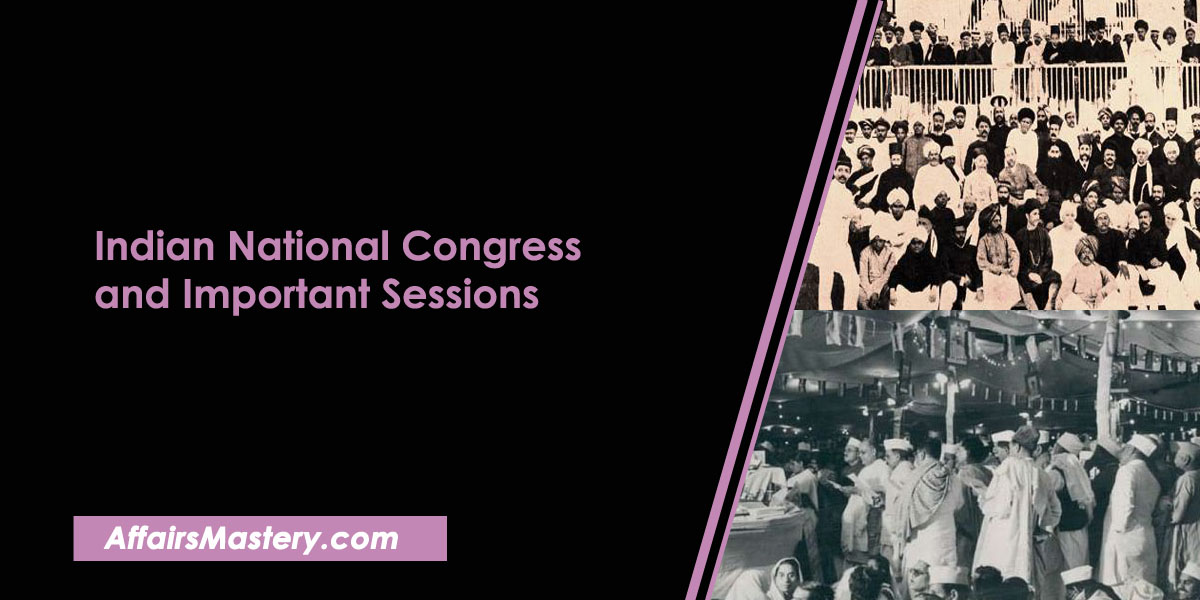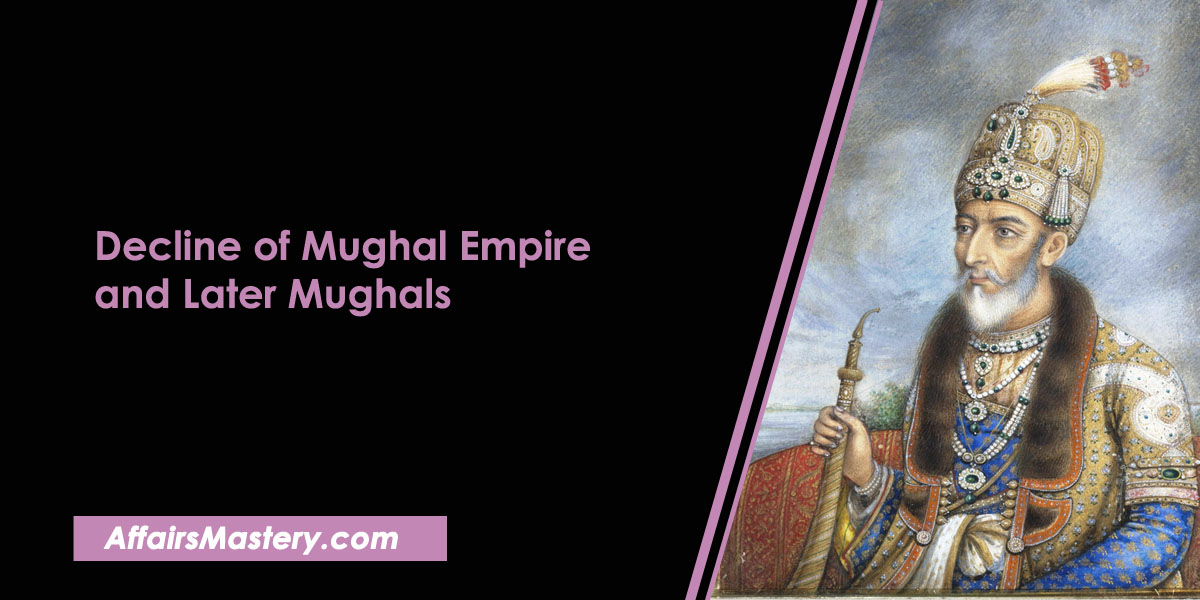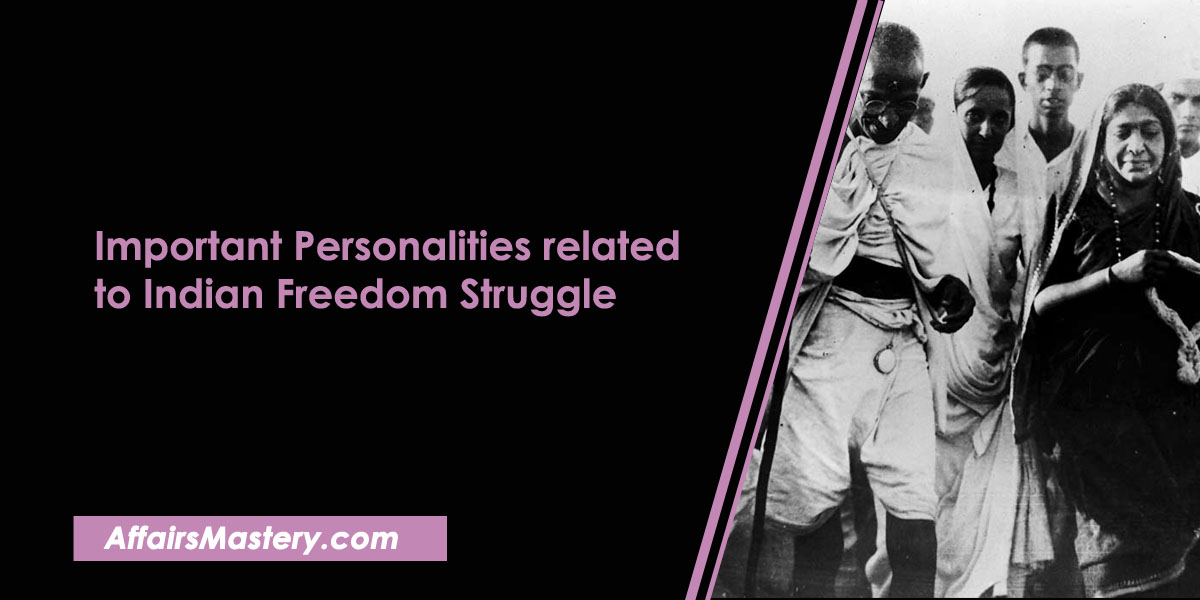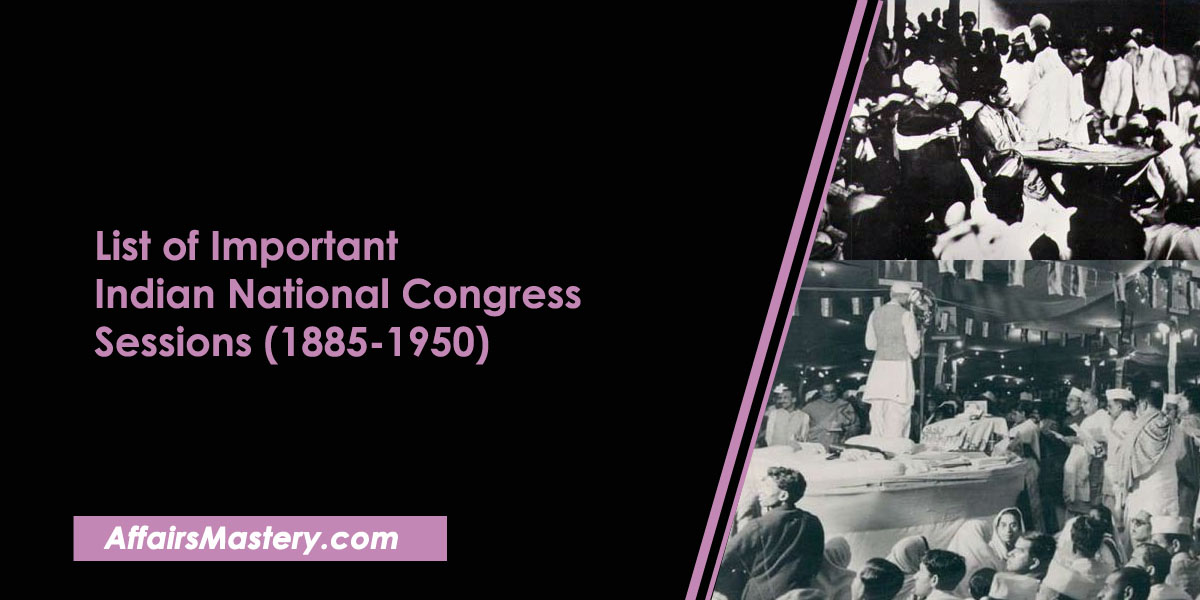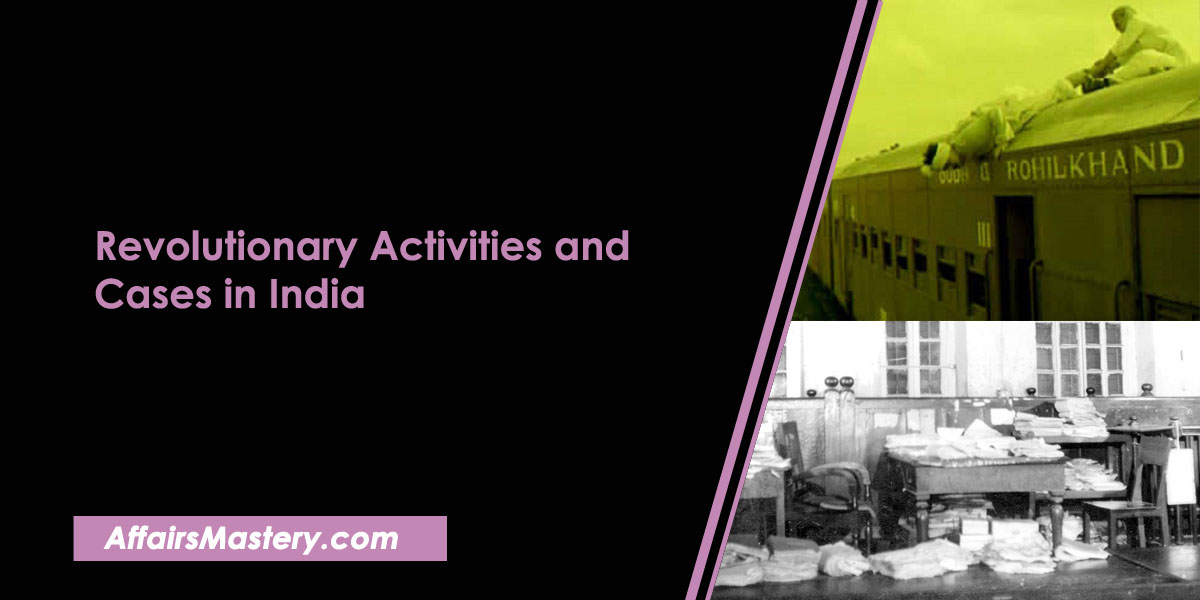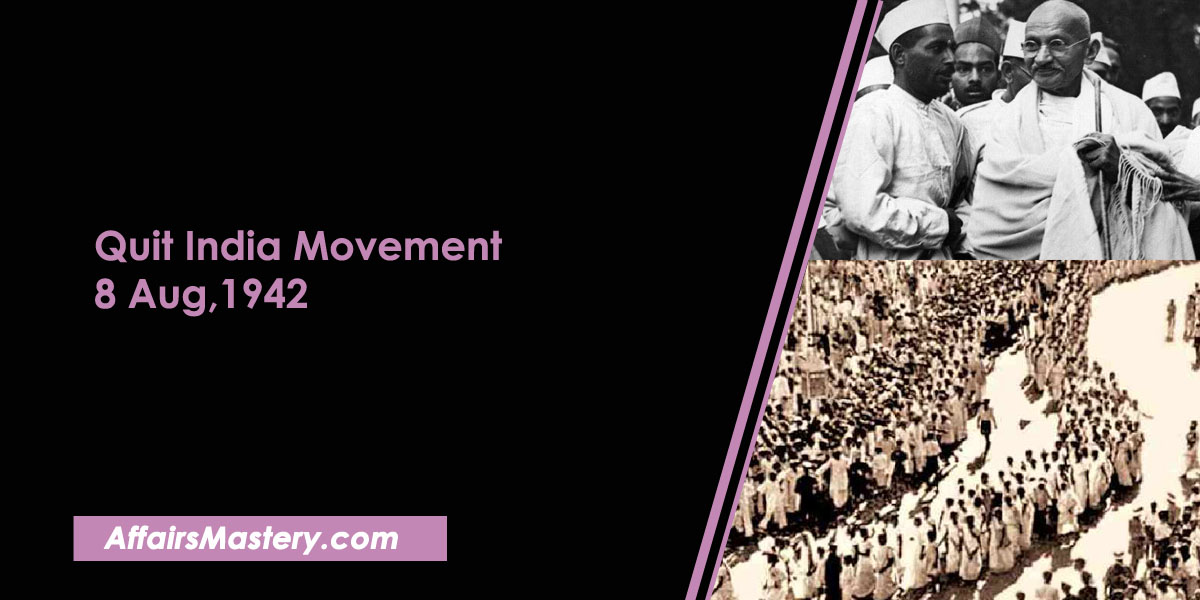Indian National Congress History – Aim, Initial Phase, Towards Split, Failure, Safety Valve Theory and Important INC Sessions
Indian National Congress History. The Indian National Congress was founded in December 1885 under the presidency of W.C. Bannerjee and its first session was attended by 72 political workers. It was the first time that a unified expression of Indian nationalism had occurred on an all India scale, and A.O Hume – a retired English ICS officer who played an influential role in forming INC- made this event possible. Important Short note for various exams.
The history of Indian nationalist movement can be seen in three different phases: Moderate phase or the Early Nationalists (1885-1905), Extremist phase or the Militant Nationalists (1905-18) and Gandhian Era (1918-47).
From the perspective of an examination like Civil services, State exams, SSC, Banking, Railways and any other One Day exam, all the necessary facts and information are listed below.
Aim
- The goal of organizing and leading a democratic, all-India nationalist movement is to serve the people by uniting them together in order to bring about progressive change that benefits their society as a whole.
- Politicize and educate people.
- Establish the headquarters for a movement.
- It is important to promote and facilitate amicable relations among nationalist political workers from various regions of the country.
- Develop and spread an anti-colonial nationalist ideology which emphasizes the importance of freedom from oppression, and self reliance.
- Formulate and present popular demands before the government.
- It is important to develop and strengthen a sense of national unity among people by promoting mutual understanding, tolerance, mutual beliefs and common decisions
- Carefully promote and nurture Indian nationhood.
Initial Phase
First Session (1885)
- On 28th December, 1885, at the Gokuldas Tejpal Sanskrit College, Bombay.
- Mr. Womesh Chandra Banerjee presided over it.
- 72 delegates had participated.
- Mr. Hume was elected as the first general secretary of the INC.
- 9 resolutions were passed in the first session.
Second Session (1886)
- Under the Chairmanship of Dadabhai Naroji, 431 delegates had participated at Calcutta.
- A.O. Hume was made the General Secretary of the Congress.
- It was decided to formally establish the provincial committees of the Congress
- Congress constituted a 17 member committee to deliberate on the questions related to essential public services.
Third Session (1887)
- Held at Madras, Badruddin Tayyabji constituted a subject committee.
- Another legal committee has been established to create and develop the constitution of the party.
- 607 delegates participated . It was from this session only that the efforts to make Congress a people’s organization were starrted.
Fourth Session (1888)
- Held at Allahabad under the Chairmanship of George Yule.
- He became the first English President of the Congress.
INC Towards Split
- The Congress session of 1892 was held at Allahabad. It was the second session of the Congress in Uttar Pradesh. INC’s third session in Uttar Pradesh was held in Lucknow in 1899, in which the constitution of the party was approved and also a decision to constitute regional committees was taken.
- In contrast to the more moderate stance of Congress, an extremist movement within its ranks began spearheaded by Bal Gangadhar Tilak and Sri Aurobindo Ghosh that was growing in strength.
- Aurobindo wrote extensively against this moderate stance of the Congress in ‘Indu Prakash‘ published from Bombay.
- From 1885 to 1905, both the moderates and extremists were placed in control of the Indian National Congress; however, due to the growing popularity of Tilak increased, so did the disagreements between moderates and extremists as they had different views.
- The partition of Bengal in 1905, increased these disagreements further.
- The slogans of Swadeshi, Boycott and national education against the partition of Bengal had created a deep divide within the Congress as it caused strong disagreements between its members.
- The first conflict between these groups took place in Banaras session. The reason for this conflict was the proposal to welcome the Prince of Wales, scheduled to visit India in 1906. Moderates were in support of this but Tilak was in opposition.
- At the Calcutta session in 1906, when the extremists proposed a resolution to launch a boycott movement at an all India level, the moderates strongly opposed it and argued against its implementation.
- The effect of these differences came to the fore at the Surat Session in 1907 when the Congress was finally split into two groups.
Failure
- The Congress used various constitutional methods such as prayers and petitions to forward their demands to the British in order to gain more rights for themselves.The relative ineffectiveness of the Constitutional methods has led to criticism from promoters within Congress itself.
- Early Moderates politicians were mainly Hindus, which inevitably led to the imposition of social orthodoxy on various social issues.
- Muslim participation began to decline dramatically after 1893.
- The leaders were unsuccessful in their attempts to rally the people together for an anti-imperialist struggle and could not gain any traction or support from the masses.
- There were contradictions in modes of protest by the Moderates, which made it more limited and alienated from the greater mass of the Indian population.
- The basic weakness of the early national movement lay in its narrow social base. Lacking support of the masses.
- It was not possible to accept the demand for Indians in commissioned ranks because no European officers were willing to be led by an Indian commander, which would have been a significant change.
Safety Valve Theory
- Since the Congress was founded by A.O. Hume, it was alleged that the Congress was initially founded as a result of a deliberate conspiracy hatched by the British to provide a ‘safety valve’ so as to emphasize and manifest the years of pent-up animosity that the Indian middle class intellectuals were feeling, as well as to highlight and express greater dissatisfaction of all Indians toward British rule.
- The historical evidence of the “Safety Valve theory” was given strength by Hume’s inspection and analysis of seven volumes containing secret reports that he had read in Shimla, India back in 1878.
- The story was first mentioned in Hume’s biography, written by William Wedderburn and published in 1913.
- According to the story, the British saw a need for an organisation that could safeguard their reign and control any potential political uprisings in order to ensure stability within the country.
- The Safety Valve theory was accepted by the Marxist historian like R.C. Dutt.
- But the arguments against the theory is that the Indian leaders who worked together with Hume in founding the National Congress were highly patriotic and noble, exhibiting true commitment to their cause who willingly accepted Hume’s help as they did not want to arouse official hostility towards their efforts at so early stage of a politcal activity.
- If Hume wanted to use Congress as a ‘safety-valve’, the moderates leaders hoped to use him as a ‘lightning conductor’. The phrase, ‘lightning conductor‘ was used by G.K. Gokhale.
Important INC sessions
| Year (Place) | President name | Remarks/Outcomes |
|---|---|---|
| 1905 (Banaras) | G.K. Gokhale | Discussion over ‘Swaraj’ for the first time Congress began functioning as a regular and Permanent organization |
| 1907 (Surat) | Dr. Ras Bihari Ghosh | Split in Congress |
| 1909 (Lahore) | M.M Malaviya | Demand for free and compulsory Primary education |
| 1910 (Allahabad) | Sir William Wedderburn | Demand to revoke Indian Press Act and Seditious Meetings Act |
| 1911 (Calcutta) | B.N. Dar | First time recital of Jan-Man-Gan in Congress session |
| 1915 (Bombay) | Sir S.P. Sinha | Congress and Muslim League agree to hold their session at the same place Attended by Viceroy Lord Willington |
| 1916 (Lucknow) | A.C. Mazumdar | Unification of Congress Lucknow pact between Congress and Muslim League |
| 1917 (Calcutta) | Annie Besant | First Women President of Congress For the first time, Congress listed social reform as one of its goals |
| 1919 (Amritsar) | Motilal Nehru | Congress support to Khilafat Movement |
| 1920 (Nagpur) | C. Vijayaragavachariar | Amendment in the Constitution of Congress Working committee formed reconstitution of committees on Linguistic basis Congress membership fee at 25 paisa |
| 1922 (Gaya) | C.R. Das | Differences on the decision to join legislative councils |
| 1924 (Belgaum) | M.K. Gandhi | Acceptance of the agreement between ‘no changers’ and ‘Swarajists’ |
| 1925 (Kanpur) | Sarojini Naidu | First Indian Woman president of Congress |
| 1927 (Madras) | M.A. Ansari | Demand for ‘Poorna Swaraj’ for the 1st time Protests against Simon Commission Congress joins International League against Colonialism |
| 1928 (Calcutta) | Motilal Nehru | Differences between the supporters of Poorna Swaraj and Dominion Status |
| 1929 (Lahore) | J.L. Nehru | Endorsement of the demand for Poorna Swaraj 26 Jan,1930 to be celebrated as Independence Day |
| 1931 (Karachi) | Vallabhbhai Patel | Approval to Gandhi-Irwin Pact Resolution on Fundamental Rights passed Demand for the nationalization of important industries |
| 1934 (Bombay) | Rajendra Prasad | Amendment in Congress Constitution |
| 1938 (Haripura) | Subhas Chandra Bose | Nationalist movements in Princely States were given moral support |
| 1939 (Tripuri) | Subhas Chandra Bose (Re-elected, but had to resign) | For the 1st time Congress lent its complete support to the movements in the Princely states |
| 1940-46 (Ramgarh) | Maulana Abdul Kalam Azad | Gandhi launched ‘Civil Disobedience Movement’ Rejection of British Government right to frame a Constitution for India |
| 1946-47 (Meerut) | J.B. Kripalani | J.B was one of the most ardent disciples of Gandhi President of INC during the transfer of power from Britain to India in 1947 |
If you find our content helpful and interesting, please consider joining us on Telegram @affairsmastery_official to show your support. We would really appreciate it!
Related articles
- Important Battles in Indian History 2023-24
- Important treaties in Indian history 2023-24
- List of Foreign Travellers who came to India
- List of Governor General of India and Viceroy of India
- Robert Clive – Important Short Notes for Exams 2023-24
- Warren Hastings – Important Short Notes for Exams 2023-24
- Lord William Bentinck – Important Short Notes for Exams 2023-24
- Lord Canning – Important Short Notes for Exams 2023-24
- Lord Mountbatten – Important Short Notes for Exams 2023-24
- C. Rajagopalachari – Important Short Notes for Exams 2023-24
- Lord Wavell – Important Short Notes for Exams 2023-24
- Lord Linlithgow – Important Short Notes for Exams 2023-24
- Lord Willingdon – Important Short Notes for Exams 2023-24
- Non Cooperation Movement (1919-1922)
- Important Personalities related to Social Movements of India
- List of Important Books on Revolt of 1857 and their Author
- Important Leaders of 1857 Revolt and their places
- Constituent Assembly of India and its Composition: Important Short Notes
- Important Tribal Movements in India
- Direct Action Day 1946: Important Short Notes for Exams
- Interim Government of India, 1946 and its members
- Important Socio Religious Reform Movements in India – Short Notes
- Khilafat Movement (1919-1924) – Important Short Notes for exams
- Lucknow Pact, 1916 – About, Features, Outcome (Important Short Notes)
- C R Formula or Rajaji Formula, 1944 – About, Main Points (Important Short Notes)
- Wavell Plan, 1945 – About, Main Points (Important Short Notes)
